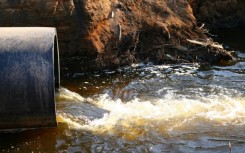Lisa Garber
Activist Post
Threats continue to plague the victims of Superstorm Sandy, this time from the floodwater, air, and the very food in their refrigerators.
According to New Jersey Department of Health’s state epidemiologist, Tina Tan, floodwaters can be a noxious brew. “[They] potentially could contain mixtures of a variety of chemicals such as pesticides, paint, gasoline…other things for example that you might store in your garage or basement that might actually get all flooded out.” Add bacteria like E. coli from sewage treatment plants to the toxic stew, and it’s no wonder public health officials are sounding the alarm.
Tan advises watching out for nausea, vomiting, diarrhea, and other symptoms of gastrointestinal upset, which can be especially debilitating and even life-threatening for infants, the elderly, and those with compromised immune systems.
Victims have been instructed to stay away from water as much as possible and, when possible, to wear protective gear like goggles, gloves, and boots. “Wading through standing water can potentially put people at risk,” says NYU Langone Medical Center’s Dr. Joseph Rahimian. “We saw this in Katrina; people were wading through stagnant water and they developed infections from Vibrio [bacteria].”
New York City acquires its water from groundwater reservoirs which flow downhill to the city, requiring no electricity, but other areas are less fortunate. People must boil water before drinking.
Foodborne Illnesses
Eating, however, is another problem. With no electricity in many areas, hungry victims turn to questionable food in their refrigerators.
“In 2003 there was a long blackout in August, and we saw a significant increase in foodborne illness in the days after,” says Tom Frieden, head of the Centers for Disease Control and Prevention. The rule of thumb: don’t risk it. Better yet, learn how to preserve your food without electricity.
Threats in the Home
Even after the putrid floodwaters withdraw, residents are faced with moldy homes. This can result in allergic reactions, asthma attacks, bronchitis, and brain complications at worst.
Mold is present in 25 percent of American homes and 40 percent of our schools—and that’s without flooding. (If you’re worried about mold in your home, here are 4 ways to naturally purify the air in your home).
Threats come even from the air itself as people without electricity misuse generators, which cannot be used indoors without proper ventilation. Misuse can result in carbon monoxide poisoning.
There is no time better than the present for those of us who were fortunate enough to be out of Sandy’s path to learn how to prepare for hurricanes or any other disaster. It’s better to know than not to know.
Additional Sources:
NPR
Fox News
Environmental Health Journal
This article first appeared at Natural Society, an excellent resource for health news and vaccine information.



Be the first to comment on "Sewage, Bacteria, and Unknown Contaminants from Sandy May Soon Pollute Water"